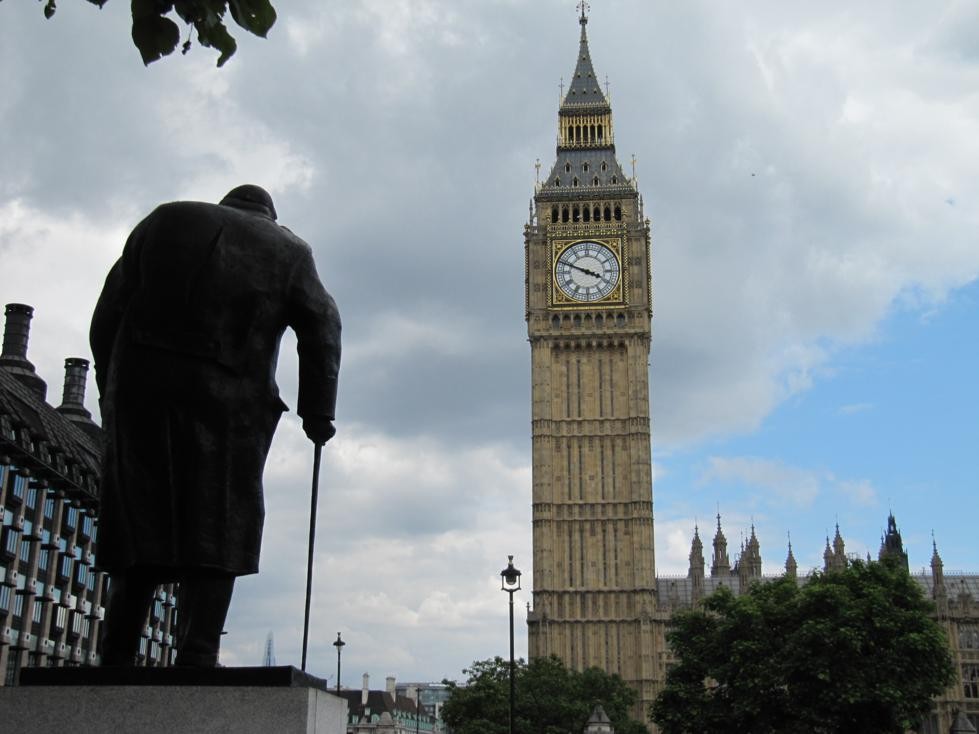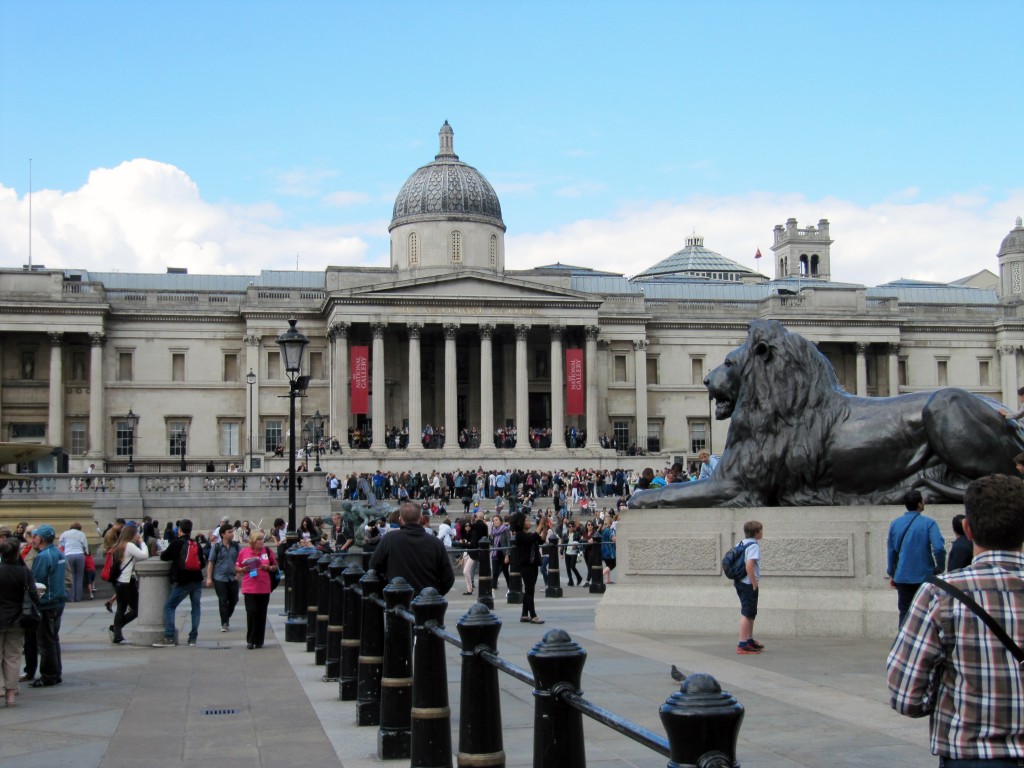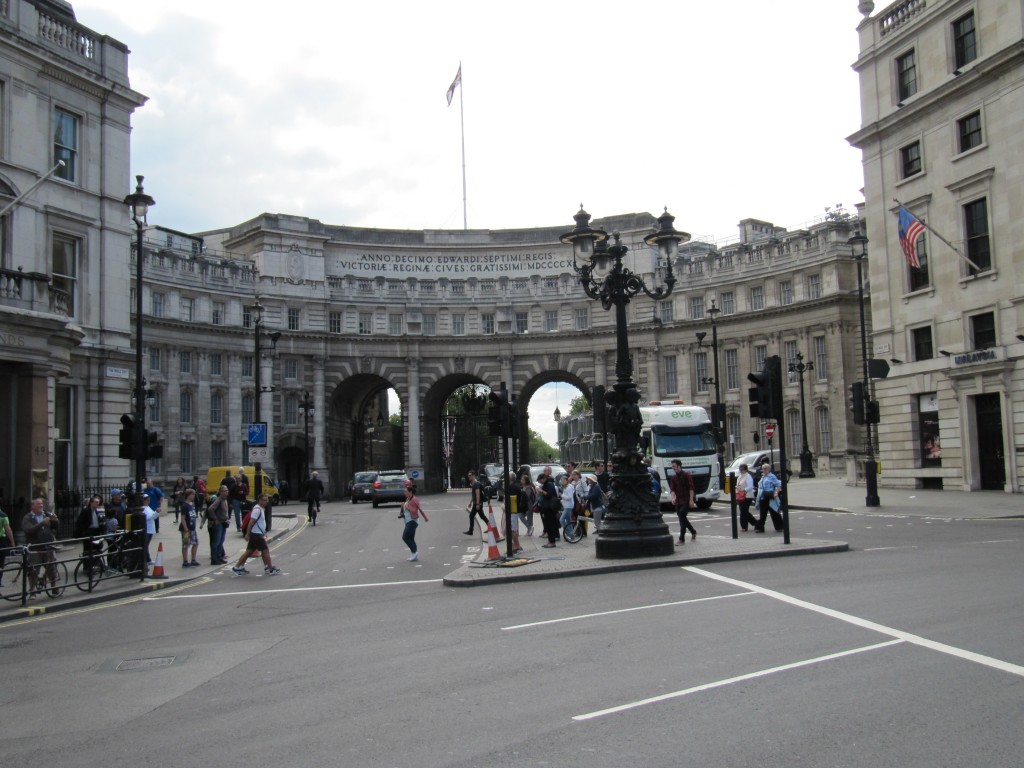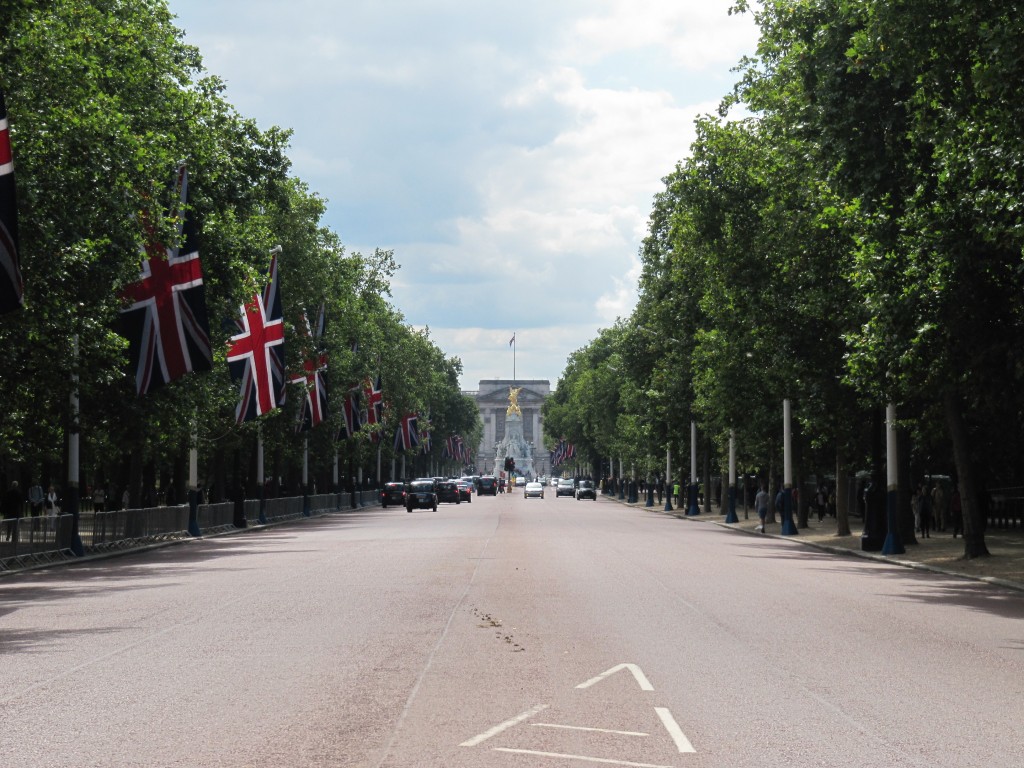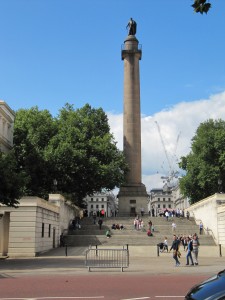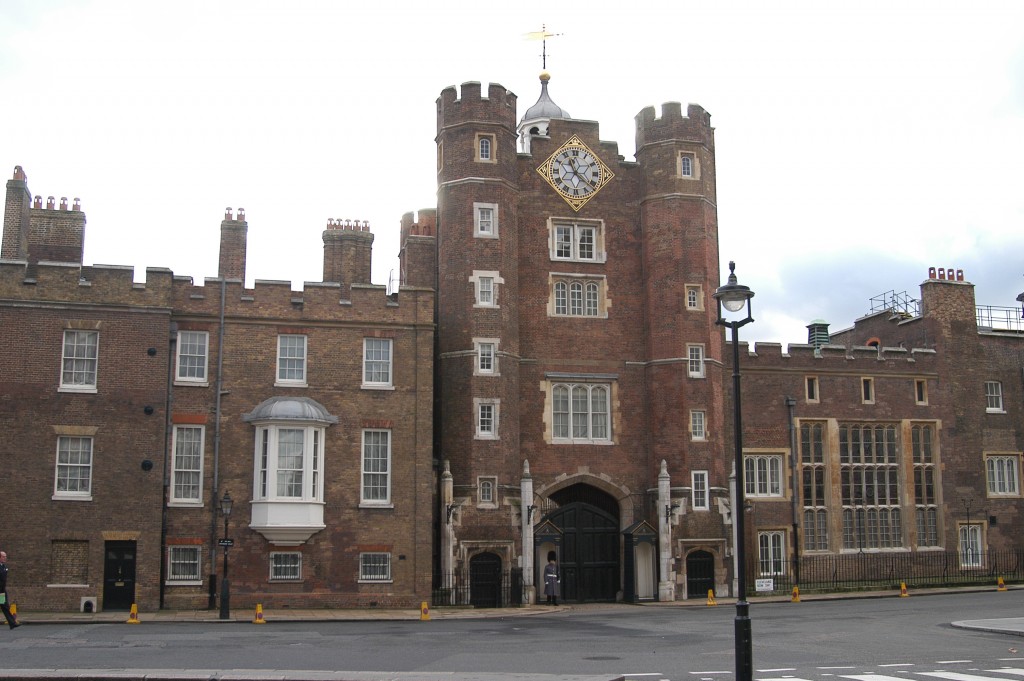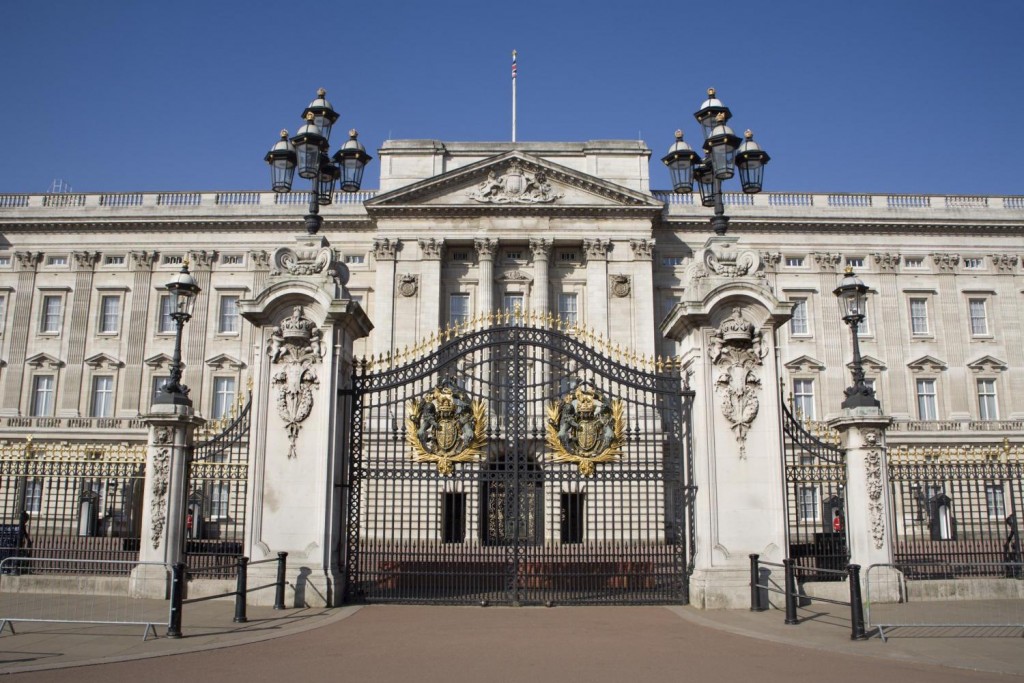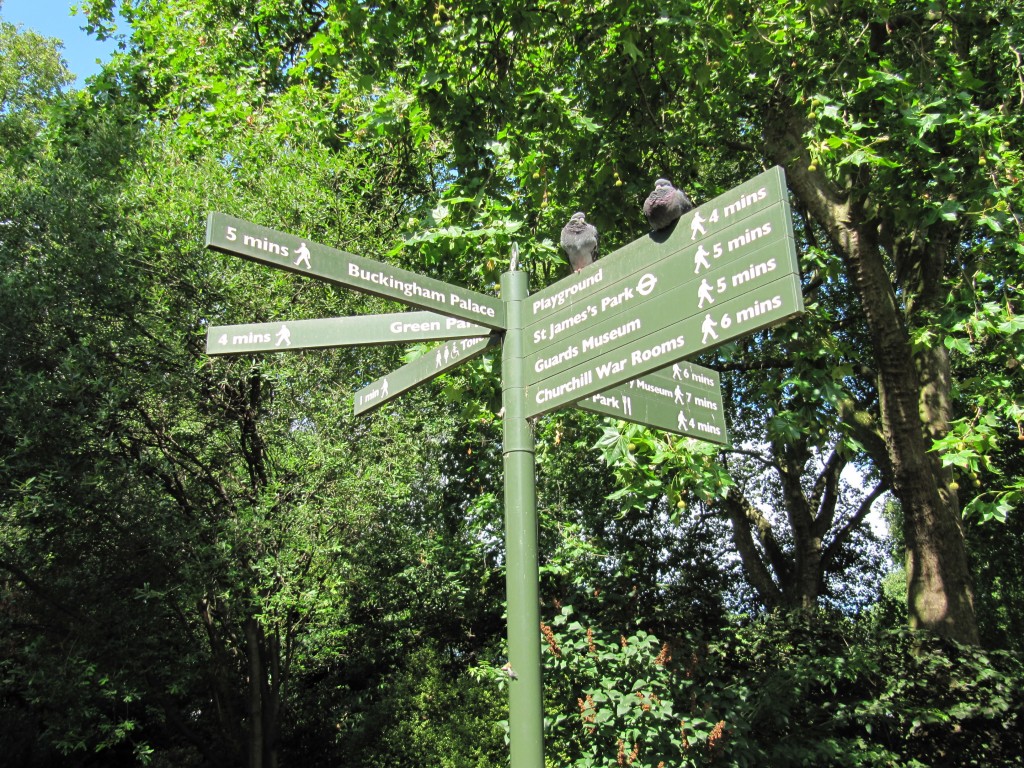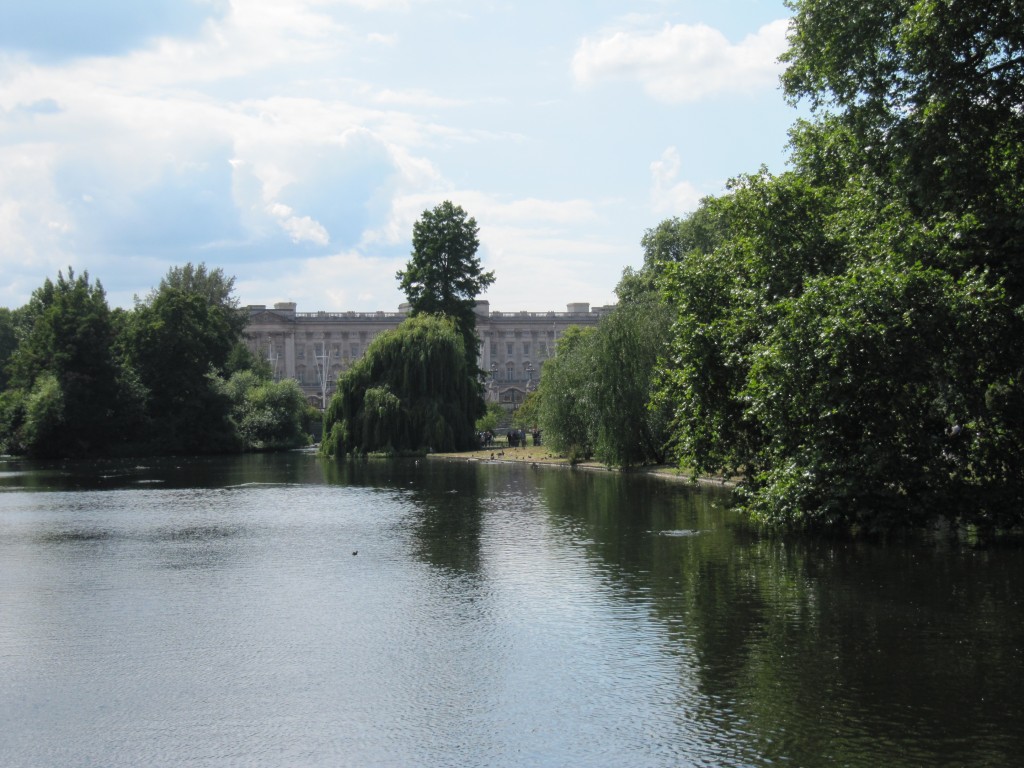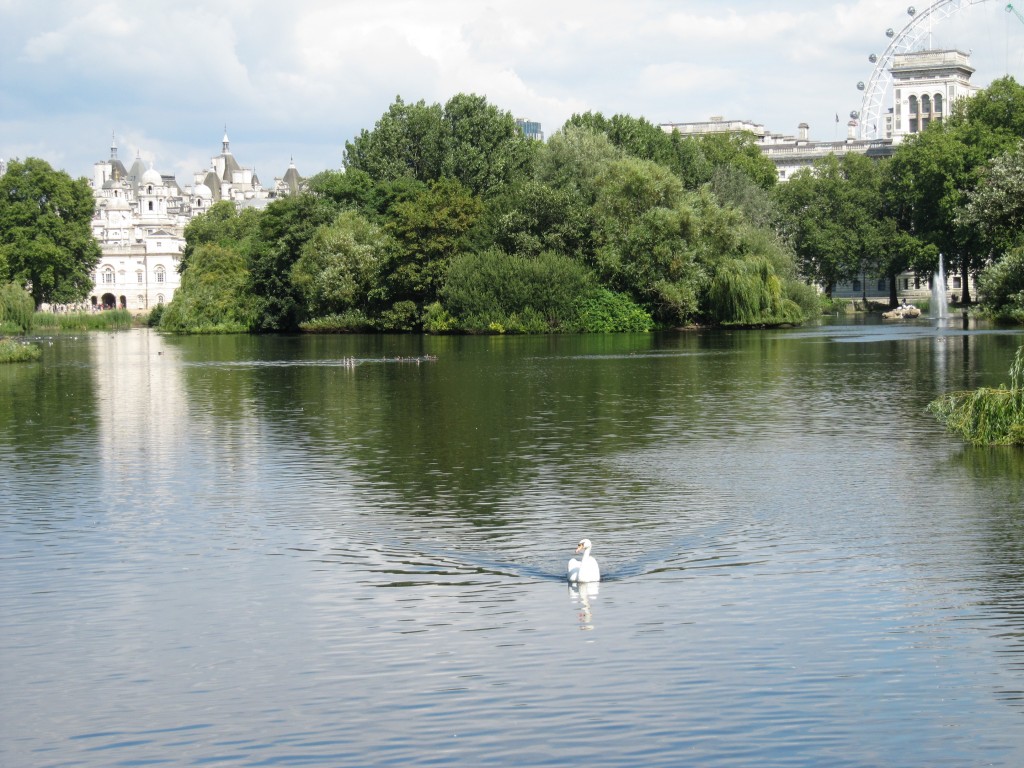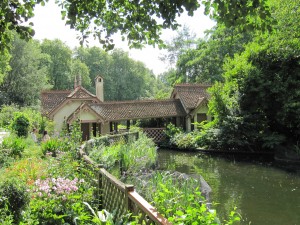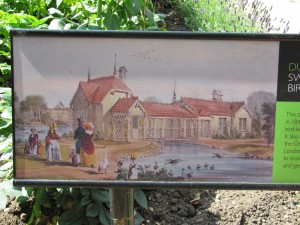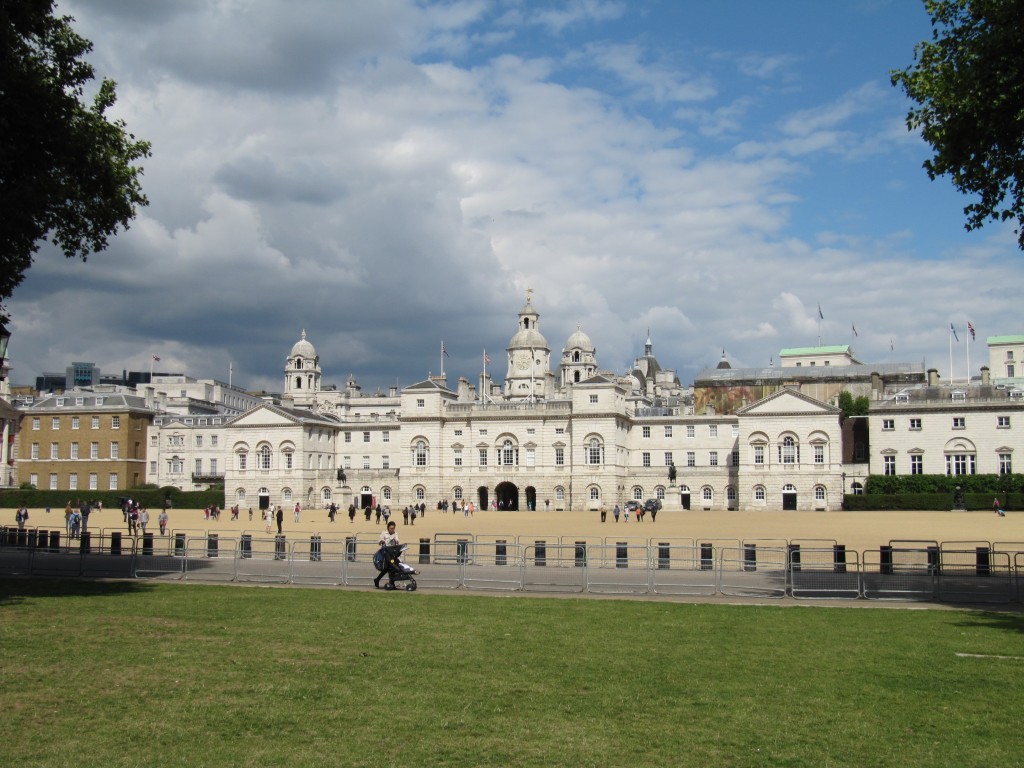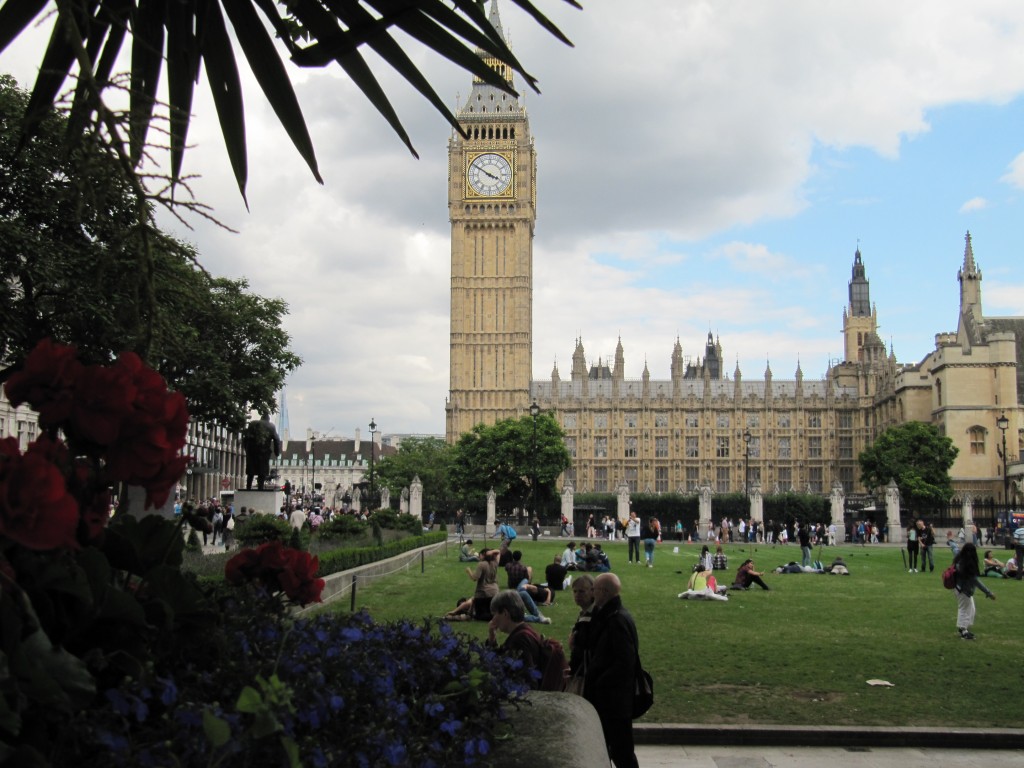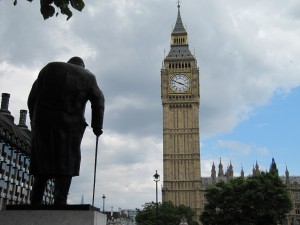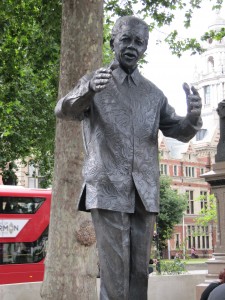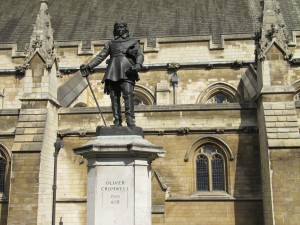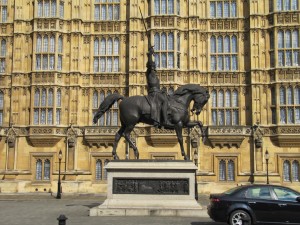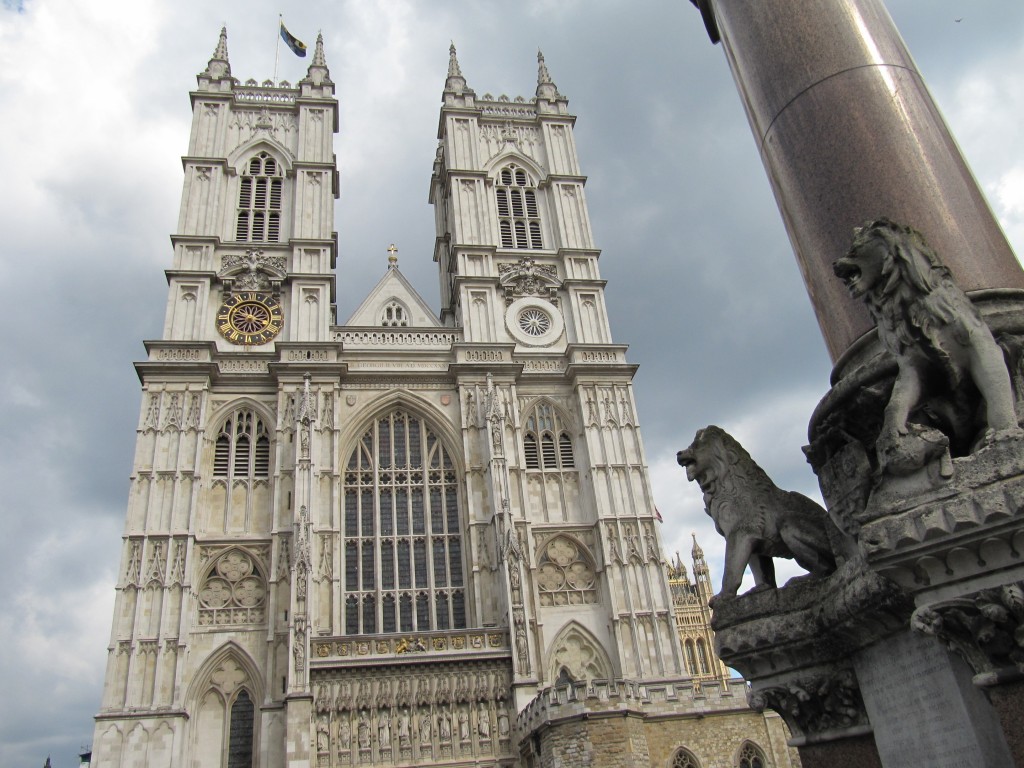A classic London walk for first time visitors.
Duration: about 2 hr (visits excluded).
How can one visit London without including the most famous London walk of all? This walk – that we have friendly nicknamed “FEC Walk”, (First Essential Classic) – will take you across central London to see some of the most important landmarks which you cannot miss.
Trafalgar Square
The starting point is Trafalgar Square, which is the true heart of London. To be precise, the geographical centre of London has been set exactly there, on the small pedestrian island in front of Nelson’s column, where you can find the equestrian statue of King Charles I.
 And this is the first unusual thing about London and this walk: why not Queen Elisabeth I, or Queen Victoria, or even Richard I? In the centre of London there is the only King who witnessed the (temporary) end of the monarchy: King Charles I. He wasn’t certainly the most popular of the English Kings either, and probably the rather modest dimension of its statue, compared to the imposing height of Nelson’s column behind it, seems to prove it. After all, he was remembered mainly for the amount of taxes he imposed to cover his never ending expenses and for his will to get rid of the parliament. Eventually, the Parliament got rid of him and he was decapitated in 1649, not very far from the spot where his statue is, further down Whitehall in front of the Banqueting House (that we will see later during our walk).
And this is the first unusual thing about London and this walk: why not Queen Elisabeth I, or Queen Victoria, or even Richard I? In the centre of London there is the only King who witnessed the (temporary) end of the monarchy: King Charles I. He wasn’t certainly the most popular of the English Kings either, and probably the rather modest dimension of its statue, compared to the imposing height of Nelson’s column behind it, seems to prove it. After all, he was remembered mainly for the amount of taxes he imposed to cover his never ending expenses and for his will to get rid of the parliament. Eventually, the Parliament got rid of him and he was decapitated in 1649, not very far from the spot where his statue is, further down Whitehall in front of the Banqueting House (that we will see later during our walk).
But for the time being we forget this gruesome event and we will focus on admiring the beauty of the place. Trafalgar Square is certainly one of the best squares in London, certainly the most impressive and wide: a huge thoroughfare with constant traffic, but also a hub of activity and the central point of various public events. It’s not unusual to find stages with live music, demonstrations, public parties and great celebrations, such as the Irish St. Patrick’s Day, or the Indian Divali, or again the Chinese New year’s day, or the celebrations for the end of Ramadan. The multicultural heart of London always beats in Trafalgar square.
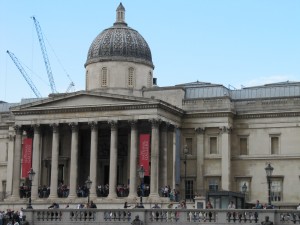 The square is dominated by the neoclassical shape of the National Gallery, which is definitely worth a visit. But you don’t need to take it all in in just one go: you will definitely enjoy it more if you pop in from time to time when you find yourself again in Trafalgar Square. After all, the National Gallery – as many other museums in London – follows a free entry policy, and therefore you can get in and out as many times as you please. This is particularly useful with the unpredictable English weather. Is it raining? Get inside and look at some impressionists, or the work of Van Gogh, or the painter of your choice (or follow our guide to the National Gallery). The rain will not last for long: the sun will soon come out again and you can start your walk.
The square is dominated by the neoclassical shape of the National Gallery, which is definitely worth a visit. But you don’t need to take it all in in just one go: you will definitely enjoy it more if you pop in from time to time when you find yourself again in Trafalgar Square. After all, the National Gallery – as many other museums in London – follows a free entry policy, and therefore you can get in and out as many times as you please. This is particularly useful with the unpredictable English weather. Is it raining? Get inside and look at some impressionists, or the work of Van Gogh, or the painter of your choice (or follow our guide to the National Gallery). The rain will not last for long: the sun will soon come out again and you can start your walk.
The Mall and Pall Mall
From Trafalgar square go through the imposing Admiralty Arch , look for the mysterious nose in the wall (we will tell you more about it in another post), rub it (it brings good luck) and carry on: now you’ll find yourself on the Mall, the long avenue that take you straight to Buckingham Palace. This is the road of national British celebrations and often the poles along the side of the road will be adorned with the Union Jack. This is where most competitions end – such as the London Marathon – and where the Queen parades at the end of her celebration, the famous Trooping the Colour
Did you know? The Mall and its parallel road Pall Mall due their name to the game of palle malle, which was played in the fields that, in the 17th century, occupied this area. Croquet is the descendant of that game (but please don’t confuse it with cricket! An Englishman will never forgive such a faux-pas).
You can follow the Mall for a while, or you can walk to Buckingham Palace through St James’s Park, that lies on your left hand side (however we will walk through St James’s Park on the way back). I suggest you to leave the usual tourist route that take you straight to Buckingham Palace, and, if you fancy walking a bit more, explore the less known (and less crowded) streets that lie behind the Mall: turn right just after the Institute of Contemporary Arts and take the steps that lead you to the Duke of York column.
Did you know? Duke of York is the title which is usually given to the second eldest son of the King (the first being the Prince of Wales). The current Duke of York is His Royal Highness (this is how they call the members of the Royal Family) Prince Andrew, Prince Charles’s brother. Duke of Yorks of the past have also become kings, either through natural causes (the premature death of the Prince of Wales) or through wars (ending with the premature death of the Prince of Wales), or for less usual circumstances: famous is the case of the abdication of King Edward VIII and the subsequent ascent to the throne of the Duke of York Albert also known as “Bertie” and crowned as George VI (see the beautiful film “The King’s speech”.
The column is dedicated to Prince Frederick, the second son (obviously, you might say) of King George III. Prince Frederick is one of the Duke of York who never became king, therefore his life was destined to the military career, in which he was rather good, by the way, and was remembered in particular for reforming the Army. He was also quite popular, so that when he died, in 1827, the entire British Army gave one day of pay for the construction of a monument in its honour. Nonetheless, he also met les favourable circumstances, and a defeat during the war of Flanders in 1794 gave him some notoriety in a nursery rhyme song “The grand old duke of York”
Carry on straight and turn left on Pall Mall. Here you can see some of the famous Gentlemen Clubs, which, notoriously, did not admit women. One of the most famous Clubs is the Reform Club, which you will find on your left at number 104.
Did you know? The Reform Club is the centre point of the famous novel by Jules Verne Around the World in 80 days. It is here that the famous bet to circumnavigate the world in 80 days was made ad it is here that the story and its journey will finish. The Club was the heart of the liberal and progressive London of the 18th century and the building itself – which had Palazzo Farnese in Rome as a model – was finished in 1841. It is not possible to see it inside, but the building has been used in several films. For instance, its Saloon has been the backdrop of a famous fencing fight in the James Bond film Die Another Day.
Further down Pall Mall you will see other interesting buildings of the same period, among which the Oxford and Cambridge Club, whose members are only former students of the two famous universities. Turn left onto Marlborough road which will take you back towards the Mall. On Marlborough Road you can see on your left Marlborough House – presently headquarter of the Commonwealth Secretariat – and, on your right St. James’s Palace.
Built in the 16th century by Henry the VIII – who had not only a well known passion for women, but also for fine buildings and palaces – St. James’s Palace is a typical red brick Tudor palace, and many of its features are still original. It has been a royal residence for over 300 years. Today it is the official London residence of the Prince of Wales (Charles), the Duchess of Cornwall (Camilla). You can learn more about its history from the website of the British Monarchy:
Buckingham Palace
From Marlborough Road you come back to the end of the Mall and, more or less, you are now in front of Buckingham Palace, the official London residence of the sovereign since 1837 or, in less formal terms, Queen Elizabeth II’s London home. As the official website of the British Monarchy recites, Buckingham Palace has 775 rooms. These include 19 State rooms, 52 Royal and guest bedrooms, 188 staff bedrooms, 92 offices and 78 bathrooms. Not bad!
Did you know? Buckingham Palace is open to visit in the months of August and September, when the Queen is on holiday in Scotland, at Balmoral (there are various options for your visit, with prices starting at £20.50. You can choose the type of visit and buy the tickets online from here: http://www.royalcollection.org.uk/visit/the-state-rooms-buckingham-palace).
If you don’t have the ticket, you can always take a selfie from outside the gates or from the statue of Queen Victoria, who was the first monarch to actually live in the Palace. If you want to get there for the ceremony of changing the guard, it usually takes place daily at 11:15. You can watch the video here, if you want to know what to expect, or read more information on this website: http://www.trooping-the-colour.co.uk/mounting/index.htm
However, please remember that having a clear view of the ceremony is not easy if you don’t get there quite early to get a good view point, therefore it is advisable to be there even one hour before its start.
St. James’s Park
On the way back from Buckingham Palace follow the path through St. James’s Park and make sure to get on the small bridge over the lake: you will have another nice view of the Palace, from one side, and the London Eye and the Horse Guard Palace on the other. More selfies, and you can head towards the Horse Guard Parade.
We suggest you to follow the path that leaves the lake on your left. When you reach the end of the lake you will see the fountain donated by Tiffany &Co. and the Pelican Rock where you can actually see…the pelicans! Walk around the lake towards the small cottage, which used to be the bird keeper residence in the 19th century.
Following the path you will see, on your right across the road, the vast expanse of the Horse Guard Parade. This is where the ceremony of Trooping the Colour takes place.
Daily, there is also a change of guard, which is usually less crowded than the one at Buckingham Palace. It takes place at 11 am on weekdays and at 10 am on Sundays. There is also another ceremony that takes place daily at 4 pm in the courtyard, the so called 4 O’Clock Parade.
Did you know? The 4 O’Clock parade was started in 1894 as a punishment imposed by Queen Victoria, who had found the guards drinking and gambling while on duty. She ordered that an inspection would be carried out by an officer every day at 4pm, for the next 100 years! The official punishment ended in 1994, but the tradition was kept.
If nothing is going on, you can cross the wide space and go through the gate which takes you into the Guard courtyard and further on Whitehall.
Whitehall
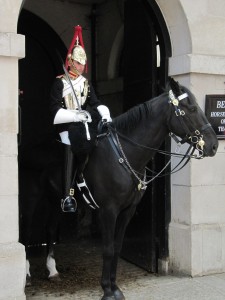 After the traditional photo with the horse guard, you can continue on your right down Whitehall towards Parliament Square. You an see Big Ben in the distance.
After the traditional photo with the horse guard, you can continue on your right down Whitehall towards Parliament Square. You an see Big Ben in the distance.
On the other side of the road you will see the entrance of Banqueting House (remember? This is where Charles I met his fate (see more here).
This building is the last standing part of the Whitehall Palace, which was the royal residence of Henry the VIII – again. The building can be visited for a small entrance fee (£6); the ceiling of Banqueting house is decorated by a wonderful painting of Rubens (1635), who was appointed by King Charles I – again. The Palace remained rather unused during the brief parliamentary period. It came back to its splendor after the restoration, but its life was doomed: in 1698 a fire destructed it almost completely. After that, the Banqueting House has been used only as a chapel and as a concert hall.
Continuing down Whitehall on your right hand side you will see the entrance to Downing street, unmissable both for the armed policemen standing at its entrance (now strongly gated and secured) and for the quantity of tourists trying to take a glimpse, a photo or a selfie.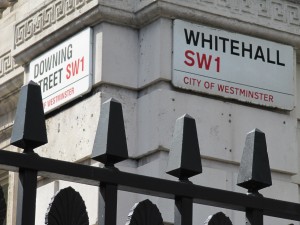
Parliament Square
At the bottom of Whitehall you end up in Parliament Square: Big Ben is on your left, towering over the Houses of Parliament, and on your right, in the middle of the square you will see the nicely trimmed lawn bordered by the statues of many famous statists, from Churchill – the first one on the right turning anticlockwise around the square – to Nelson Mandela – in the far left corner.
Two more important statues are not actually on the square, but inside the fenced area around the Houses of Parliament: the statue of Oliver Cromwell and the riding figure of Richard I – the Lionheart
Westminster Abbey
Now you can complete your tour to Westminster Abbey, the most important church of London.
Did you know? Westminster Abbey was founded on this spot in 960, yes 960, when England wasn’t even England as we know it today, and William the Conqueror has yet to arrive. The Abbey was called West Minster to distinguish it from the East Minster – that is St. Paul.
Most part of the building were erected in the 13th century, under the reign of King Henry III and they are still visible today. Unfortunately many of the older parts were demolished, but the new (for the time) gothic style was flourishing around Europe, and the English King did not want to be inferior.
The abbey has been the setting for Coronation and other royal events since 1066 and many famous weddings took place here, such as those of Prince Charles and Diana in 1981 and Prince William and Kate Middleton in 2011.
Visiting the Abbey costs £20, and tickets can be bought online here. However, the church is open to the public during services, although people cannot wander around during this time. I suggest to attend an Evensong, which usually takes place at 5pm on weekdays, or at 3pm on Sunday. Evensong is a short service always accompanied by hymns sang by resident or visiting choirs. It is a very nice experience and a wonderful way to absorb the atmosphere of the Abbey.
Your walking tour ends here: you have seen some of the most important landmarks of central London and it is now time to get back to its pulsing heart. I suggest you to take either the bus n. 11 (bus stop R across the road on Victoria Street) which will take you back to Trafalgar square, or the bus 88 if you want to get to Piccadilly Circus (leaving the Abbey, turn left on Great Smith Street and cross the road: the bus stop of the 88 to Piccadilly is the one with the letter W).
I hope you enjoyed your walk and please ask any question, leave your comments or share any experience you‘ve had!
